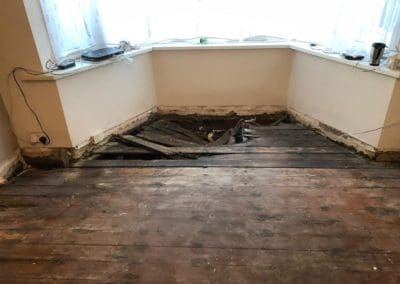Wet Rot Treatment
Wet rot is a common consequence of poor property maintenance or a building defect. Once the source of the moisture is removed and drying is promoted, it’s sufficient to replace wet rot decayed timber. If necessary, you can also use a suitable preservative to protect timber that’s at an elevated moisture level until it dries down.
Get in touch with us
For further information get in touch with Biocraft:
Brown wet rot
The most common wet rots that cause cuboidal cracking are cellar fungus and mine fungus.
Cellar fungus is common in skirting boards and joists in basements. Brown strands are often seen radiating from the wood and the timber will frequently retain a thin veneer at the surface, below which is the damaged wood.
Mine fungus is pure white and the strands stay flexible when dried. This is unlike dry rot strands which become brittle when dry.
White wet rot
White wet rots attack all components of the wood, ligin, cellulose and hemi cellulose and cause it to become fibrousy. The most common white wet rots are Phellinus Contigus, Asterostroma species and Donkioporia Expansa. In addition, there are various other less common rots which may be present when building materials are subjected to elevated and sustained moisture levels. As with all types of wet rot, the first priority is to remove the source of moisture.
To arrange a timber survey or to receive a quotation for a dry rot treatment in Berkshire, Hampshire, Surrey, Oxfordshire or London, please call 0800 781 8358 or email [email protected].


